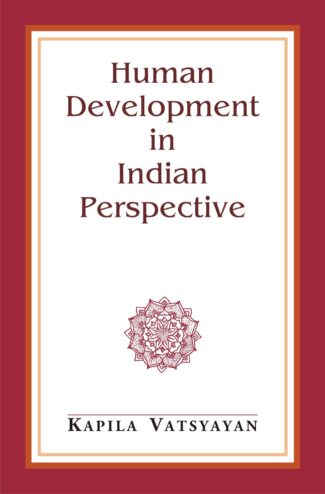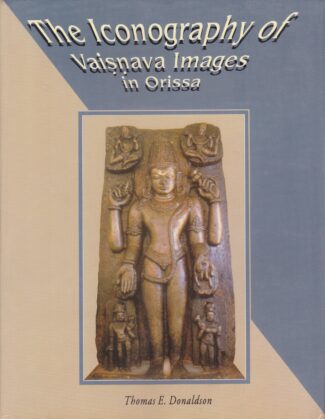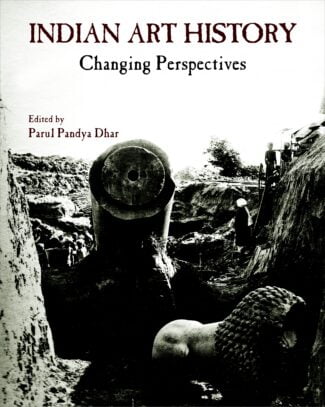Showing 41–50 of 119 results

Based on decades scientific research this book projects India as the foremost country of the world where diamonds were discovered first. It explains past beliefs, present status of diamond mines, cutting-polishing industry, trade & marketing, and talks about future challenges and remedies to regain original glory.
India, for many millennia, was the diamond capital of the world and controlled the global diamond business. Indians were the first to discover, mine, curate and market diamonds in the world, and were the first to discover that diamond can be cut only by diamond, and can be polished with its own powder. Vedas, Upanishads and epics stand testimony to it. Diamonds were the quintessential luxury of the Indian royalty. Kohinoor, (Mountain of Light), Hope, Great Moghul, Orloff, Sansi, Hastings, Pigott and Akbar Shah-Jahangir Shah had unparalleled place in the annals of Indian and world history.
Till the seventeenth century, the Golconda Fort City in south India was the World Trade Centre of diamonds and was a dream destination for “who is who” in the diamond business. Though at present, diamond business is about $ 72 billion plus worldwide, India has very little to offer to this market size. New nations/countries are on the block and India has become a trivial entity in diamond production from the colonial period due to the monopolistic policy pursued by the British in favour of the new discoveries made in South Africa, and the socialistic policies of Independent India. Even the environmental concerns stood as stumbling blocks against the growth of Indian diamond mining industry.
The present study explores exhaustive data, based on a decade-long serious research, targeting common man. It brilliantly attempts to make one aware about the birth, history, glory, places of concentration, applications of diamond and about the present Indian diamond cutting and polishing industry. The book also introduces the readers into the reality of imitations, artificial diamonds, and discusses such products in detail. It delves deep into the identification and valuation techniques of diamond, and the tools used for the same. Efforts are also made to present many a superstition associated with diamonds, and to brief those diamonds that have some bearing on history.
After decades of Independence, India has failed to regain its lost splendour and leadership position. There is a need to bring changes in its approach to this industry to put it back on track and compete with the present world leaders. The author has given special attention to analyse the present diamond scenario in India and suggests remedies

The study, beautifully illustrated, focuses on the masks of gods, goddesses and demons worn by the Newars of Kath-mandu Valley. It deals with contexts in which the dancers wear the masks and with legends concerning the dances.
The presence of masks as both ritual and art objects is attested among the traditions of mankinds oldest civilisations. Cutting across cultural and geographical barriers, they have exhibited a remarkable range and diversity of meanings throughout history. The present study focuses on the masks worn in the Kathmandu Valley by the main ethnic group, the Newars. A specific aspect of the Newars is that, despite the political dominance of Hinduism, Buddhism is still alive. The masks represent gods, goddesses and demons, but never the dead or the ancestors. The author argues that the reason for the absence of figurations of the dead or ancestors is to be explained by the funerary rituals. There are no memorial monuments or other objects which perpetuate the memory of the deceased: It is through rituals performed after their death that the memory is preserved. The distinction is made between statue-masks and the masks worn during ritual dances. The author focuses on the contexts in which the masks are worn by professional dancers and draws attention to the legends which explain the origin of the dances and their ritual role. Detailed descriptions are given of the dances performed during different festivals in the localities of the Kathmandu Valley. The masks then worn are destroyed and re-made ritually each year by painters. Anne Vergati explains the relation between the dancer as a social person with a social identity and the mask which represents a god or a goddess. The mask is not supposed to hide the face of the dancer but to transform his identity in such a way as to make of him a deity. Supported by numerous illustrations in colour, the book will appeal to historians and connoisseurs of art as well as to scholars of the cultures of the Himalayan regions.

The book explores the ancient Indian art from the perspective of gender and delves into the development of engendered representation in art, with the emergence of aesthetic and sexual archetypes and stereotypes of women: goddesses, mothers, wives, nuns, semi-divine yakshis, ogresses and others by giving insights into the intention, agency and patronage patterns in early Indian art.
The book is an exploration of ancient Indian art from the perspective of gender. It focuses on the period from 181 bce to ce 320 a period of great turmoil in the politico-economic, socio-cultural and religious spheres that gave rise to contesting ideologies and gender complexities in ancient India. It delves into the development of engendered representation in art, with the emergence of aesthetic and sexual archetypes and stereotypes of women: goddesses, mothers, wives, nuns, semi-divine yaksis, ogresses and others. It examines the nature of the stereotypes and archetypes that were constructed on the basis of gender roles rather than on sex and how these were reflected by various attributes of the representations nudity or its absence, ornamentation, gestures, direction of gaze and context. It gives interesting insights into the intention, agency and patronage patterns in early Indian art.
The volume with its scholarly approach, providing fresh insights into early Indian art, will prove useful to scholars, students and researchers of Indian art and history alongwith the cognoscenti.

This book, a collection of six lectures Dr Kapila Vatsyayan made at different UNESCO seminars and two reports, presents, discusses, analyses and prognosticates the varied aspects of human development from the perspective of a developing country.
This book, a collection of six lectures Dr Kapila Vatsyayan made at different UNESCO seminars and two reports she prepared for UNESCO, presents, discusses, analyses and prognosticates the varied aspects of human development in India and other developing nations. She has made some commendable observations and suggestions with a futuristic view on UNDPs Human Development Report 1990 which defines and measures human development.
Through these papers and reports, Dr Vatsyayan has attempted to chart out a new perspective as far as development is concerned from the viewpoint of developing countries. The Western paradigms in defining development do not fit the frame of these countries. Culture, arts, oral wisdom, all should come to play a crucial role in defining, planning and executing developmental programmes in such countries, and in defining their educational status.
In addition, the volume provides a historical glimpse of Delhi and addresses the issues of cultural heritage and cultural lifestyle of the National Capital Territory of Delhi. In a nutshell, Dr Vatsyayan makes the readers travel with her continuous UNESCO engagement, over a period of sixty years.

With surveys of diverse Buddhic and Hindic temples in India, Sri Lanka, Indonesia, Myanmar, Thailand, Vietnam, and even Malaysia, the book shows how the basic element in their architecture: the PLAN was fraught with iconographic import and input, necessitating the guidance of authoritative compendia, the arcane knowledge of the sthapati (priest-architect), and other complex procedures steeped in symbolism.
Over the rolling centuries, Buddhism and Hinduism, two of the worlds oldest sustained faiths, came to evolve a complex, yet precisely defining, iconic language: not just for figural representations, but for the architectural plans of their temples and monuments as well a language that allows interpretations of geometric proportions. Here is the first ever effort to brilliantly unravel the iconic idiom involved in the architectural plans of Buddhist and Hindu temples and monuments of India and the Indianized States of Southeast Asia. With his indepth surveys of diverse Buddhic and Hindic temples in India, Sri Lanka, Java (Indonesia), Kambuja, Myanmar, Thailand, Vietnam, and even Malaysia, the author shows how the basic element in their architecture: the PLAN conceived within a cosmological framework was fraught with iconographic import and input, necessitating the guidance of authoritative compendia, like the Manasara and the Mayamata, the arcane knowledge of the sthapati (priest-architect), and many other complex procedures which all were steeped in symbolism. In analysing the architectural plans of these temples, Professor Bunce also highlights the various related iconographic considerations, like orientation, basic geometric forms, construction methods, rules and ratios, the non-congregational necessity, the high place as a consideration as well as the cave besides a number of viable influences which exert various amounts of control, e.g., textual, philosophic/theologic, numerological, astrological/astronomical, regionality and, most importantly, the mandala. Generously supported by visual material comprising as many as 400 figures and line-drawings, Professor Bunces book is veritably a monumental, off-beat exercise of enormous interest to iconographers as well as the historians/specialists of South and Southeast Asian temple architecture.

This work analyses the Vaisnava iconography of Orissa. Vaisnava iconography proper including Hari-Hara and other composite images and those of Visnus female consorts; images of Visnu in his avataras; depiction of Balarama, Krsna and Jagannatha; and iconography of the secondary figures like Garuda and Hanumana.
This work is a well?researched attempt to analyse the Vaishnava iconography of Orissa which is unique in that there are to be found an overwhelming number of Vishnu images in the region despite paucity of Vishnu temples and inscriptional evidence suggesting royal patronage. Dr. Donaldson here undertakes a detailed study under four heads: Vaishnava iconography proper including Hari?Hara and other composite images and those of Vishnus female consorts; images of Vishnu in his different avataras; depiction of Balarama, Krishna and Jagannatha; and iconography of what are termed secondary figures like Garuda and Hanumana. He presents various iconographic charts throughout the book on the basis of textual description of the many images and their representations in sculpture with a number of photographs of the images studied, he provides details on the physical attributes of each group of images and specific images and their evolving iconographic and stylistic peculiarities: such as the decline of a particular motif and the emergence of another depending on the popularity of sects. The author also traces with keen interest the influence of Vaishnavism on the iconographic programme and rituals of Shaiva temples, resulting in even joint worship of Vishnu and Shiva. For each type of iconography, the book cites examples of different Orissan temples and discusses the images in them. The book would be of immense interest to scholars of religious studies and particularly those concerned with Hindu iconography.

The book relates the diverse experiences of Mr. Tzannis Tzannetakis, a former Greek Prime Minister, in India: he witnesses centuries-old marvels, landmarks of its long religious-cultural tradition; and his response is profound and genuine.
A journey to India . . . is quite unlike a journey to any other land . . . this sentiment expresses the uniqueness of a visitors experience of India. For, among other things, India is a perpetual mystery to him from the beginning; he wades through the mystique and out of it; and he is never free of it. For Mr. Tzannis Tzannetakis, a former Prime Minister of Greece, India is this and much more. His informal experiences presented here are diverse and steeped in the historic-cultural flavour special to India. He sees its centuries-old palaces, forts of ancient maharajas, of the glorious Mughals; the unparalleled cave monuments of Ajanta-Ellora with their exquisite carvings, the breathtaking sculptural decorations and the architectural dream of Khajuraho; the grandeur of the Taj, a wonder in white marble; the exotic deserts of Jaisalmer; the heart of holy India, Banaras, with the ever-flowing Ganga; the marvel of Delhi which amalgamates the old and the new. His response is, likewise, rich with a range of tones; he not only admires the material landmarks of ancient India but breathes in the spirit of the past the old delight, the royal romance, the dignity, valour in that chivalry . . . His is not simply a discovery of India but an analysis of Indias time-tested values and its modern message in order to understand India in the real sense its unique past; the India of today, of the traditional and the modern; and the India of the future . . . its goals, aspirations. The authors tone is wonder-struck but, at the same time, genuine and realistic. He captures the essential India and not just its forms and colours to present a delightful, critical and sensitive picture.

The key art historical concerns addressed in this volume include studies in form, style, textual interpretations, iconography, symbolism, representation, connoisseurship, artists, patrons, gendered readings, and the inter-relationships of art history with archaeology, visual archives, and history, in the Indian context.
The shaping of the disciplinary practice of art history in the Indian context has been a fascinating process and brings to the fore a range of viewpoints, issues, debates, and methods. Changing perspectives and approaches in academic writings on the visual arts of ancient and medieval India form the focus of this collection of insightful essays.
A critical introduction to the historiography of Indian art sets the stage for and contextualizes the different scholarly contributions on the circumstances, individuals, initiatives, and methods that have determined the course of Indian art history from colonial times to the present. The spectrum of key art historical concerns addressed in this volume include studies in form, style, textual interpretations, iconography, symbolism, representation, connoisseurship, artists, patrons, gendered readings, and the inter-relationships of art history with archaeology, visual archives, and history.
Based on the papers presented at a Seminar, Historiography of Indian Art: Emergent Methodological Concerns, organized by the National Museum Institute, New Delhi, this book is enriched by the contributions of some scholars who have played a seminal role in establishing art historys disciplinary orientations in the Indian context, and by those who offer more recent perspectives on the subject. Lucid and informative, this is an indispensable resource for all those engaged with the history and historiography of ancient and medieval Indian art in universities and museums across the globe, and will also be of interest to the general reader.

The book describes the priceless art objects collected and displayed at the Kalamandapa (the Museum) at Jnana-Pravaha, Varanasi. These objects include Indian miniature paintings, Tangkhas from Tibet and Nepal, stone sculptures and terracottas. Some of these objects have been presented for view in major national and international expositions.
Jnana-Pravaha, the Centre for Cultural Studies & Research at Varanasi represents the vision of its founders, Bimla Poddar and Suresh Neotia. It aims to serve and promote the cause of culture by rediscovering and highlighting its universal elements those that transcend all barriers. Jnana-Pravaha presents varied and scintillating forms of the visual and performing arts, and endeavours to create an awareness about the countrys cultural ethos and ethnic conventions. It is devoted to reviving and preserving old and obscure scripts which, while of immense significance for the reconstruction of the cultural history of the subcontinent, have been neglected to the point of being extinct. Through its educational and research programmes and publications, Jnana-Pravaha is engaged in the dissemination of our tangible and intangible heritage. All this is being accomplished with quiet zeal in a serene yet pleasing ambience. Situated on the left bank of the holy stream of Uttaravahini Ganga, Jnana-Pravaha faces the historical fort of Ramnagar on the other side of the river. While a well-equipped reference library on Indian culture, art, history, philosophy, literature and allied subjects caters to the needs of students and researchers, iterature and allied subjects caters to the needs of students and researchers, Kalamandapa (the Museum) presents a treasure trove of art dating from the pre-Mauryan age to the 20th century. The survey and documentation of local sites and antiquarian remains is emerging as an added attraction to art historians. Seminars, symposia and workshops on different themes form regular features of the Centres activities. In-depth studies of specific subjects are a hallmark of Jnana-Pravaha. Similarly, conducting special courses in early scripts like Brahmi and Kharoshti affirms the conviction of the Centre of the need to revitalise archaeological source material. An independent research project for deciphering and studying epigraphs and records has been launched with the appointment of Senior and Associate Fellows. Staging of Sanskrit plays is another Jnana-Pravaha annual event. The Vedas are the fountain of knowledge and are accepted as the earliest books of the world. To preserve their oriental style of learning and recitation, Jnana-Pravaha has established a city unit known as the Samskara & Anushthana Kendra. The emphasis is on the conventional and correct pronunciation of Vedic hymns. Young students undergo rigorous training in the Gurukula style under the close supervision of the Acaryas.

Marriage or Vivaah, particularly in India, is a sacred ceremony comprising various customs Þ religious and social Þ and Vedic rituals. These are meant to propitiate the gods for obtaining their blessings for the bride and the bridegroom, and to honour and entertain those who participate in the celebrations. This book explains in detail, all the important rituals which form part of the marriage.
Marriage is considered a very significant ritual for giving societys sanction to a close relationship between a man and a woman as husband and wife. It is, therefore, also called a social system. The marriage ceremony is a combination of many rituals, based on information contained in Hindu scriptures. It also represents and reflects the social customs and practices that are prevalent in the society. The rituals vary depending upon the community, the religion and the state where they are performed. The marriage customs, rites and rituals among royal families are mentioned in this book most of these rituals are followed by common people as well and are performed in the original or altered forms in the Indian society. Mr R.N. Kogata and Mrs Lalita Kogata did a lot of research and consulted several authorities and have written in detail about the various rituals involved in a human beings life from birth to death. Different scholars have mentioned different numbers of rituals and sacraments 25, 40 or 48. But Maharishi Veda Vyasa has described 16 rituals as important. Out of these, the Vivaah (marriage) samskaar itself encompasses various rituals the main ones covered in this book are: the Bindaulee (wedding procession); Hathalevaa (hand-taking ceremony or paanigrahan), Phere (agni pradakshinaa, circumambulation of fire); Kanyaadaan (giving away daughter in marriage); Maangbharaaye (filling vermilion); Mangalsutra (tying the wedding thread); Saptapadee (walking seven steps together); and Vadhu kee Vidaaee (brides departure to her in-laws house). This book should be in all households in order that all will know the meanings of the various rituals in a marriage particularly in the present days when learned pandits who can explain the rituals, are few, and people have no time or inclination to go through voluminous scriptures or texts on the subject of marriage.
| There are no products |